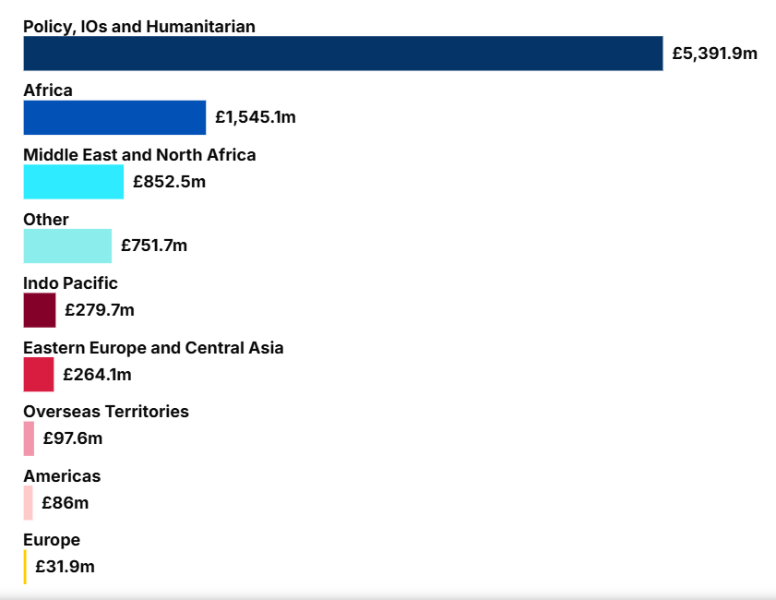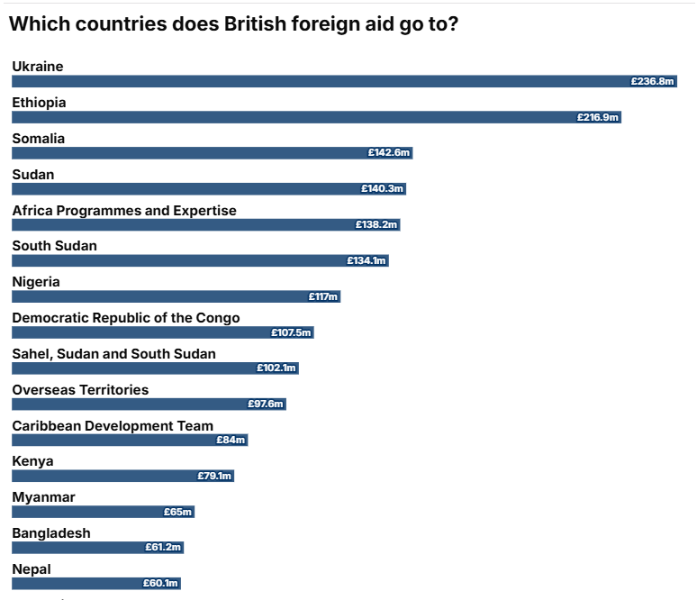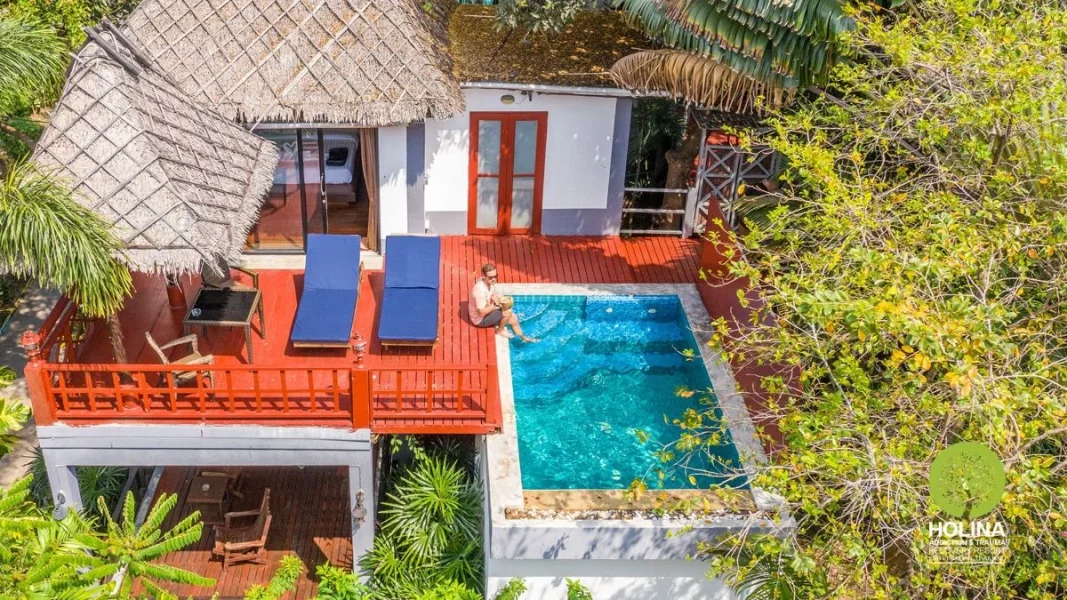-
Posts
36,983 -
Joined
-
Last visited
-
Days Won
5
Content Type
Events
Forums
Downloads
Quizzes
Gallery
Blogs
Everything posted by CharlieH
-
As men age, digestion often becomes less efficient, leading to bloating, acid reflux, constipation, or other gut-related issues. A healthy gut isn’t just about avoiding discomfort—it plays a crucial role in nutrient absorption, immune function, and even mental well-being. Common Gut Health Challenges After 50 Ageing can slow down digestion due to reduced stomach acid and enzyme production, making it harder to break down food. The gut microbiome, which consists of trillions of bacteria, also changes with age, potentially leading to imbalances that affect digestion and overall health. Poor diet, stress, medications (especially antibiotics and NSAIDs), and lack of fiber can further disrupt gut function. Key Strategies for a Healthier Gut Increase Fibre Intake – Fibre keeps digestion regular and feeds beneficial gut bacteria. Aim for fiber-rich foods like vegetables, legumes, nuts, and whole grains. Stay Hydrated – Water helps move food through the digestive tract, preventing constipation. Herbal teas and bone broth can also aid digestion. Eat Fermented Foods – Yoghurt, kefir, sauerkraut, and kimchi introduce probiotics (good bacteria) that support a balanced gut microbiome. Reduce Processed Foods & Sugar – These can feed harmful bacteria and contribute to inflammation, making digestion sluggish. Take a Probiotic Supplement – If your diet lacks fermented foods, a high-quality probiotic can help maintain gut balance. Manage Stress – Chronic stress affects gut motility and can cause bloating or discomfort. Practices like meditation, deep breathing, and moderate exercise support gut-brain health. Limit Alcohol & NSAIDs – Excessive alcohol and frequent use of anti-inflammatory drugs can damage the gut lining over time. Improving gut health is about making consistent, mindful changes. A well-functioning digestive system supports overall health, energy levels, and even mood. By adopting gut-friendly habits, men over 50 can maintain better digestion, absorb nutrients more efficiently, and reduce the risk of long-term health issues.
-
As men age, maintaining strength, endurance, and overall health becomes a priority. But should you focus on weight training or cardio? The answer isn’t one-size-fits-all—it depends on your goals, lifestyle, and overall health. The Case for Weight Training Strength training is crucial for men over 50 because muscle mass naturally declines with age. Resistance exercises—whether using dumbbells, kettlebells, or body weight—help maintain muscle, boost metabolism, and strengthen bones, reducing the risk of osteoporosis. Regular weight training also improves joint stability, posture, and even testosterone levels. Best Approach: Train at least 3 times per week Focus on compound movements (squats, deadlifts, presses) Use moderate to heavy resistance (8–15 reps per set) The Role of Cardio Cardio improves heart health, lung capacity, and circulation. It also aids in fat loss and endurance. However, excessive cardio without strength training can lead to muscle loss, which can slow metabolism and make it harder to maintain strength and mobility. Best Approach: Low-intensity steady-state (LISS): Walking, cycling, or swimming for 30–45 minutes High-intensity interval training (HIIT): Short bursts of intense effort followed by rest, great for fat loss without excessive muscle breakdown 2–3 sessions per week for heart health and stamina Finding the Right Balance For optimal health, a combination of both is ideal. A good weekly plan could look like this: 3 days of strength training (focus on major muscle groups) 2–3 days of cardio (mix of LISS and HIIT) Active recovery days with walking, stretching, or mobility work Both weight training and cardio play essential roles in ageing well. Strength training keeps muscles strong and metabolism high, while cardio supports heart health and endurance. Finding the right balance ensures longevity, mobility, and overall well-being for men over 50.
-
Thailand's beloved Songkran festival is approaching, promising an even grander celebration in 2025. This traditional Thai New Year festival, officially running from April 13 to 15, combines sacred traditions with modern festivities that draw visitors from all over the world. Songkran is Thailand’s main holiday period. During this time, many Thais return home to visit their families, perform sacred ceremonies, give alms to local temples, and wash away all the negative energy and bad luck of the previous year. When is Songkran? Although Songkran is celebrated from April 13 to 15, these dates are not set in stone, as certain regions extend their festivities for up to a week. In 2024, Thailand’s Ministry of Culture extended the festival from April 1 to 21 in celebration of UNESCO’s recognition of Songkran as an intangible cultural heritage of Thailand. Key Festival Locations Bangkok remains the festival's epicentre, with major celebrations taking place at Khao San Road, Silom Road, and Siam every year. Two flagship events anchor the celebrations: Siam Songkran Music Festival (April 11 to 14) at RCA Bangkok, featuring global stars like Steve Aoki and Dimitri Vegas S2O Music Festival (April 12 to 14) at Rajamangala National Stadium, headlined by Alan Walker and Marshmellow Beyond the Capital But of course, Bangkok is not the end-all-be-all destination. Many cities around Thailand also partake in the festivities, with some provinces extending the celebrations way past the official date. Waterfights in Pattaya take place up until April 19, with Beach Road transforming into a festival zone. Other notable locations include: Phuket: Celebrations at Kata, Karon, and Patong Beach Chiang Mai: Traditional festivities centred around Tha Pae Gate and the Old City Moat Traditional Meaning Although the water fights are what we look forward to the most, the Thai New Year is also deep-rooted in meaningful traditions: Song Nam Phra: Ritual cleansing of Buddha statues Rod Nam Dam Hua: Young people honour elders by washing their hands or feet Temple offerings and family gatherings Originally, water was only sprinkled onto others but that has transformed into full-blown waterfights and music festivals. Some have accredited this shift to a move to influence tourism. Essential Safety Guidelines Respect monks, elderly, babies, and uniformed officers by not splashing them Avoid targeting motorcyclists Use clean water only Carry valuables in waterproof bags Stay hydrated and celebrate responsibly Whether you're joining the water fights or experiencing traditional ceremonies, Songkran 2025 offers something for everyone. Pack your water guns and prepare for Thailand's biggest celebration of the year. Original article by The Thaiger
-
British taxpayers are in for a surprise as billions of pounds are shelled out annually on overseas aid, with some eyebrow-raising projects like shrimp farming in Bangladesh on the list. The "Waste Files" campaign has dived into this spending, spotlighting questionable ways Britons' money is used worldwide. It's not just aquaculture in Bangladesh catching attention. The UK’s aid funds have also been spent on poetry workshops in Colombian prisons and a conference tackling "gender-based disinformation" in Kenya. These expenditures have reignited debates over foreign aid, especially as the US slashes its spending. Former President Donald Trump and tech mogul Elon Musk have taken an axe to America’s overseas aid efforts. The Trump team plans to significantly reduce staffing in the US Agency for International Development (USAID), aiming to cut global aid administration jobs down to fewer than 300. Amid these drastic cuts in the US, the UK has surprisingly ramped up its international spending. The "Waste Files" campaign, drawing inspiration from Musk's cost-trimming moves in the US, highlighted the spending on Bangladesh’s shrimp health research since October 2022. The UK's Centre for Environment, Fisheries and Aquaculture Science handed contracts to the Bangladesh Agricultural University for this project. Critics question such spending, but Downing Street stands by the aid budget as crucial for addressing global issues like conflicts, climate change, and poverty. However, the government promises a thorough review, examining every penny to ensure spending aligns with public priorities. As the debate over aid heats up, UK officials are caught balancing global responsibility with domestic expectations. Whether poetry in Colombian cells and shrimp studies in Bangladesh justify the hefty price tag remains a contentious topic among taxpayers. The upcoming spending review might just bring the answers UK citizens are seeking. Based on information from the Daily Mail and other sources.
-
- 1
-

-
Red alert for all 1.8 billion Gmail users! A cunning scam is making the rounds, threatening to infiltrate your accounts. This devious attack uses advanced AI to create deepfake robocalls and tailored emails that sneak past security filters. Here's how the scam works: Victims receive a call warning that suspicious activity has been detected in their Gmail account. They’re told to expect an email with instructions to "fix" the issue. The email directs them to a fake website that mimics Google’s, tricking them into entering their login credentials. Cybersecurity experts are sounding the alarm that the ultimate aim is to swindle users into handing over their Gmail recovery code, thinking it will restore their account. This isn’t just about Gmail, though—any services linked to the account could be breached. The FBI has chimed in, highlighting that these sophisticated schemes can lead to severe financial losses, damage reputations, and compromise sensitive data. Malwarebytes posted a critical notice last week, urging Gmail users to heed the FBI's warning. They stress that scammer tools are cheaper and more accessible than ever, citing McAfee’s study on how convincing deepfakes can be churned out in just 10 minutes for as little as $5. While previous warnings centered on AI-generated videos and emails, Malwarebytes uncovered that the current wave involves AI-crafted robocalls combined with email scams. Although these elements aren’t new, their combination poses a heightened threat. To protect yourself, Malwarebytes advises avoiding clicks or downloads from unexpected messages and refraining from entering personal info unless a site is unquestionably legitimate. A password manager can help securely autofill credentials on trusted websites, and keep a vigilant eye on your accounts for strange activity. The FBI has also issued alerts for iPhone and Android users, cautioning against a sophisticated scam that could jeopardize bank accounts and personal data. They recommend immediately hanging up if you receive a dubious call—especially where the scammer pretends to be from your bank or local law enforcement using "spoof" caller ID technology. This scam is spreading like wildfire, with reports of impersonators even claiming to be police on Long Island, New York, demanding money over phony arrest warrants. The FBI cautions against providing personal details over such calls and advises users to avoid interacting by pressing phone buttons. If you think you've been targeted, contact the real organization using an official phone number to verify any claims. Stay alert and protect your accounts, as these scammers stop at nothing to exploit vulnerabilities. 【Based on information from various sources, including Malwarebytes and the FBI.】
-
- 3
-

-

-
Renowned astrophysicist Neil deGrasse Tyson is raising eyebrows with a dire warning of a colossal asteroid that might be heading our way. Recently, Tyson took to the social media platform X to emphasize the potential danger posed by Asteroid 2024-YR4, an asteroid so massive it could wipe out a city. Tyson describes 2024-YR4 as a "city-killer," and the odds aren’t negligible. He highlighted that this mansion-sized space rock currently has a startling 2.3% chance of colliding with Earth when it swoops by on December 22, 2032. This unexpected elevation from earlier predictions has scientists and the public on edge, as the asteroid's potential impact would be catastrophic. This asteroid wasn’t even on our radar until last December, when NASA first pegged it as a possible threat. Back then, its impact probability was about half of what it is now. But as our readings of its trajectory have become more precise, the risk factor has climbed sharply. If an impact occurs, experts predict devastation on a mind-boggling scale. The resulting explosion could be akin to detonating 7.7 megatons of TNT, obliterating everything in a 3,000-foot radius. Such an impact would dwarf the atomic bomb dropped on Hiroshima, being 500 times more powerful. It's a tense situation, but for now, the odds remain in humanity's favor. Yet, Tyson cautions that neglecting scientific inquiry and capabilities due to budget cuts could hinder our defense against such existential threats. His warning comes when critical U.S. research funding is in jeopardy due to executive actions dating back to the Trump administration, which ordered a freeze on National Science Foundation (NSF) activities, among others. The NSF is a cornerstone of American scientific progress, and plans to slash its resources by half are causing a ripple of concern through the scientific community. These cuts come as a particular blow given the current situation, where funding is vital for ongoing asteroid monitoring and threat mitigation efforts. Currently, astronomers are scrambling to gather as much data as possible about 2024-YR4. The asteroid has already earned a spot on NASA's Sentry risk list, which catalogs Near-Earth Objects (NEOs) that pose significant threats. These celestial bodies are scrutinized to determine their risk of colliding with our planet. Recent observations imply that Asteroid 2024-YR4 is likely a stony asteroid, which could mean it will hit Earth in one solid piece if it enters our atmosphere. This prediction was echoed by Chris Hadfield, a former Canadian astronaut, who elaborated on the potential for the asteroid to disperse fragments at speeds exceeding 10 miles per second—faster than the International Space Station's orbit speed. The current risk corridor Should 2024-YR4 hit Earth, the resulting impact could devastate an area as wide as a major city. If the asteroid were to explode mid-air, a phenomenon known as an 'air burst' similar to the historical Tunguska event of 1908, the effects could still be catastrophic. The Tunguska asteroid blasted over Siberia, flattening vast forest areas and generating an energy release equivalent to 50 million tons of TNT—wiping out some 80 million trees. Determining the likelihood and potential impact of an asteroid like 2024-YR4 requires both ground-based and space-based observations. Enter the James Webb Space Telescope (JWST), the most powerful astronomical instrument ever constructed. Scheduled to observe the asteroid in May, the JWST promises to yield invaluable data. Its findings will not only help narrow down the possible impact zones but also improve our understanding of the asteroid’s physical properties like size and composition. Currently, scientists have plotted a 'risk corridor' that traces a path from South America, across the Atlantic Ocean, over sub-Saharan Africa, before crossing the Arabian Sea and India. However, this path could change as more data come to light. Despite the frightening statistics, experts remain hopeful. They remind us that the probability of a miss is far greater—a comforting 97.7%. Furthermore, slight variations in asteroid trajectory predictions are routine and not necessarily cause for alarm, as explained by MIT's Richard P. Binzel. There's a silver lining in all of this: humanity’s evolving capacity to defend itself against such threats. Recently, the success of NASA's Double Asteroid Redirection Test (DART) mission validated the kinetic impactor technique. This method aims to alter an asteroid's trajectory by colliding it with a spacecraft, potentially redirecting it away from Earth. If Asteroid 2024-YR4 poses a credible threat, scientists suggest we could employ similar tactics to avert disaster. The gist is to strike early—nudging the asteroid off course while it's still far away could prevent a calamitous collision. The warnings may be stark, but they underscore a vital fact: investment in science and technology isn't just about discovery; it's also about protection. As Tyson subtly warns, reducing scientific spending could make us vulnerable to threats from the vast, unpredictable cosmos. In these times of uncertainty, all eyes are on the skies and the scientific efforts striving to keep them under watch. It's a race against time, resources, and funding to ensure our planet remains a safe harbor in the universe's vast sea of possibilities. As reported by Daily Mail.
-
You're heading the right way to get this shutdown.
-

How to reduce the risk of insurance claim denials?
CharlieH replied to global expat's topic in Insurance in Thailand
Please do not "name & shame" on the forum, if you wish to share details in PM thats a choice. -
Better to ask in the Phuket Forum.....MOVED
-
When you think of Koh Phangan, rehab might not be the first thing that comes to mind. The island is famous for its full moon parties, yoga retreats, and stunning beaches. But that’s exactly what makes Holina Rehab stand out. Located at a beachfront resort with breathtaking sunset views, Holina Addiction & Trauma Recovery Rehab provides a unique setting for healing. Clients recover in a pool, engage in therapy with picturesque backdrops, and rediscover themselves in an environment far from the cold, clinical feel of traditional rehab centres. The license that changed private rehabilitation in Thailand Rehabilitation is a serious matter, and a wellness retreat alone isn’t enough. However, Holina Rehab is different. They’re a residential rehab facility in Thailand with official licensing from the Thai Ministry of Health. For years, anyone seeking rehab in Thailand had only two options. They could either choose a hospital-based detox that specifically addresses the physical consequences of drinking or drug use, typically within a medical environment, or they could attend one of the established private clinics offering addiction treatment, though these clinics previously operated under an outdated licensing protocol. This protocol has now been updated to reflect the significant shift in recent years, as Thailand has become the world leader in global rehab tourism. Holina Rehab in Koh Phangan is the proud recipient of Thailand's Ministry of Public Health’s updated licensing, which reflects this global trend towards international guests seeking legitimate help. Why This License Matters for Clients Choosing rehab is a deeply personal decision, often accompanied by concerns about effectiveness, safety, and value. Holina Rehab’s certification guarantees structured, evidence-based treatment for addiction, trauma, and mental health recovery. All programs operate under strict supervision by the Thai Ministry of Health. Clients benefit from medically supervised detoxification, therapy from licensed psychologists, and specialized trauma recovery support. Holina blends modern Western psychological methods with Eastern healing traditions, creating a well-rounded approach to recovery. Recovery in a Tropical Paradise? A rehab centre on a Thai island might conjure up images of wellness retreats with meditation and yoga. While Holina Rehab offers a resort-like environment with beachfront bungalows and pools, it remains focused on serious recovery work. Holina integrates one-on-one therapy with licensed professionals alongside breathwork, somatic healing, and sound therapy. The goal is to help individuals reconnect with themselves and break free from addiction and trauma. Recovery doesn’t have to feel like punishment—Holina’s personalized treatment plans include nutritious gourmet meals, fitness programs, and offsite recreational activities, ensuring a well-rounded healing experience. What to Expect at Holina Rehab Holina Rehab specializes in addiction, trauma, and emotional healing, with programs ranging from four to twelve weeks. Treatment begins as soon as a client arrives in Koh Phangan—there’s no rigid start date. Each client follows a personalized schedule based on their needs, whether addressing substance addiction, stress, or emotional struggles. The rehab combines the traditional 12-step model with Neuro-Linguistic Programming (NLP), talk therapy, and mindfulness techniques inspired by Thai Buddhism and Eastern philosophies. Mornings typically start with yoga, exercise, or swimming, followed by meditation and mindfulness sessions. Group therapy covers topics like family dynamics, emotional processing, and personal growth in men’s and women’s circles. Afternoons focus on individualized therapies, including sessions with psychotherapists, somatic therapists, or specialists in aqua therapy, breathwork, and art therapy. Holina also incorporates experiential healing. Sound therapy, drumming circles, and singing bowls help release emotional tension, while ice baths, saunas, and beachside massages promote physical relaxation. What Clients Say About Holina Rehab A rehab centre’s reputation isn’t just built on credentials—it’s reflected in the success stories of its clients. Brianne Nola described Holina as “a brilliant place to get back in touch with oneself,” praising the expertise and dedication of the staff. Thomas Larson credited Holina with saving his life, calling it “the most loving, caring, and supportive community I’ve ever experienced.” Recovery is challenging and deeply personal, but at Holina Rehab, it is also transformative—and it happens in one of the most beautiful places on Earth. For more information, visit Holina Rehab’s website or contact them at +66 (0) 626 418 369, [email protected], or via LINE Official @holina. Sponsored Original article by The Thaiger
-

Is It Just Me, Or Are Thai Staff Getting Ruder By The Day?
CharlieH replied to SoCal1990's topic in ASEAN NOW Community Pub
Off topic removed. -
Look like a harmless tree snake needlessly Slaughtered.
-
They are part of the family, do you know how to help them when it matters ?
-
- 5
-

-

-

-

What happend to the block user option for thaivisa forum?
CharlieH replied to villageidiotY2K's topic in Forum Support Desk
MOVED to Support Desk. -
MOVED to Travel forum
-

A Fable of Woe from the Fraught Streets of Pattaya
CharlieH replied to SoCal1990's topic in ASEAN NOW Community Pub
I kind of figure you got more enjoyment out of writing about it than experiencing it. For those who dont like long stories...... A night out in Pattaya took a wild turn when the writer’s motorbike taxi ride home became a near-death experience. After a lively evening on Soi 6 with a visiting friend, he hopped on a helmetless driver’s bike, only to endure a reckless, high-speed ride filled with pothole-induced whiplash. To make matters worse, the driver took him to the wrong apartment, then tried to overcharge him—demanding 200 baht for a 60-baht ride. Too exhausted to argue, he settled on 100 baht and questioned whether basic decency in Thailand’s nightlife scene is disappearing. -
Bin
-

Thailand Ranked 106th in English Proficiency Out of 116 Countries
CharlieH replied to webfact's topic in Thailand News
Posts removed, STOP the personal attacks please. Keep it civil or move on! -
Odd perspective considering what they actually sell.
-
-
The mindless actions of some for the sake of a damn "selfie" or for Tiktok, youtube audiences is getting ridiculous.
- 131 replies
-
- 38
-

-

-








.webp.321957c971bba5e52ac38d9370c02393.webp)
.webp.80b7233e858110b88033d60d5b08629f.webp)


